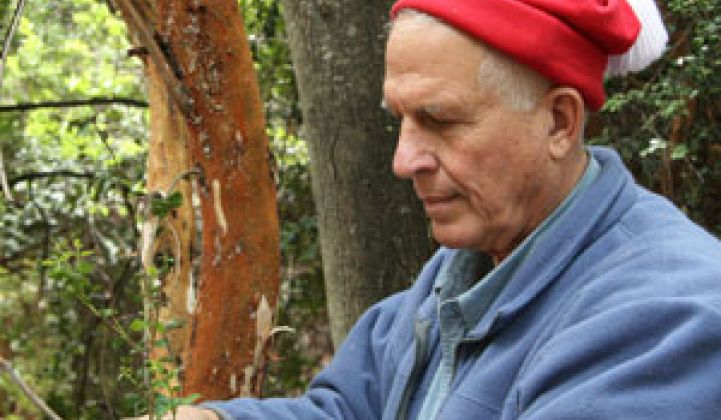Deep in the Patagonia rainforest lives a fungus that could one day help power automobiles.
Gliocladium roseum, which dwells inside the branches of a family of trees called "ulmo," can produce hydrocarbons that can be used for diesel production, Gary Strobel and his team of researchers reported in the November issue of the journal Microbiology, which featured the fungus on its cover.
Strobel, a plant-sciences professor at Montana State University, harvested the fungus during a trip to Patagonia in 2002. Finding and teasing out the useful properties of microbes in exotic plants has led Strobel around the world.
His past discoveries include a fungus that can produce taxol, an anticancer drug first isolated from the bark of the Pacific yew tree in the 1960s and '70s. Strobel's research has been commercialized by companies such as Davis, Calif.-based AgraQuest, which licensed a microbe he discovered to make pesticides.
Strobel also attracted national spotlight in 1987 when he was forced to cut down the trees he was using to test a genetically-altered bacterium for preventing Dutch elm disease. Strobel flouted federal rules requiring him to get an approval for the experiment, saying at the time that the review process would take too long and calling his decision an act of "civil disobedience."
Strobel and his fellow scientists discovered the hydrocarbon-producing characteristic of the Gliocladium roseum after noticing that the fungus was producing gases. They conducted more tests and found that, in an environment with limited oxygen, the fungus made hydrocarbons and hydrocarbon derivatives that are found in diesel fuel, most of which is made from crude oil today (see the research extract).
"The hydrocarbon profile of G. roseum contains a number of compounds normally associated with diesel fuel and so the volatiles of this fungus have been dubbed ‘myco-diesel,' " wrote the researchers from Montana State, Yale University and the Center for Lab Services in Pasco, Wash.
"Extraction of liquid cultures of the fungus revealed the presence of numerous fatty acids and other lipids. All of these findings have implications in energy production and utilization."
quot;>Fungal fuel won't be available at the gas station near you any time soon, of course. The discovery of useful compounds is only the beginning of the research needed to commercialize a biofuel-making process. Challenges will include developing the right fungal-cultivation and gas-to-fuel-conversion processes to produce the fuel in large quantities.
More advanced research and development on using microbes to produce fuels are underway, with some of the efforts claiming to be nearing commercialization. Numerous ethanol developers are looking at using microbes to turn cellulosic materials, such as wood chips, switchgrass and other nonfood feedstocks, into fuels.
The potential of cellulosic ethanol to play a large role in the transportation industry worldwide has attracted large businesses such as DuPont and the Royal Dutch Shell and startups including Coskata, Iogen and Mascoma.
A growing number of startups are working on using algae to make fuels, including Sapphire Energy, Solazyme and AXI (see Algae Biofuel Investments Explode and Univ. of Washington Launches Algae Startup).
Strobel plans to continue researching the Gliocladium roseum. In fact, a research team including researchers at Montana State's College of Engineering and at Yale has been established to investigate the fungus' genetic makeup and the enzymes that allow the microbe to break down plant materials into food.
The research team for the fungus' genetic research includes Strobel's son, Scott Strobel, who is chairman of the molecular biophysics and biochemistry at Yale.
Scott Strobel said no other scientific literature has documented a microbe that can produce the range of medium-chain hydrocarbons that is possible with Gliocladium roseum, making his father's discovery a significant one.
Join industry leaders and influencers at Greentech Media's new conference series Greentech Innovations: End-to-End Electricity on November 17 and 18 in New York City.



